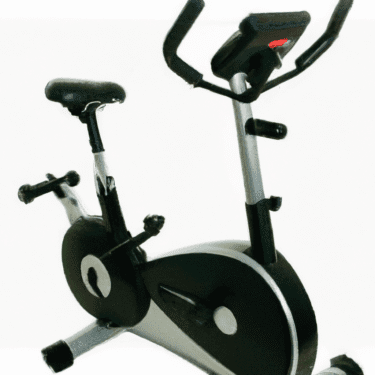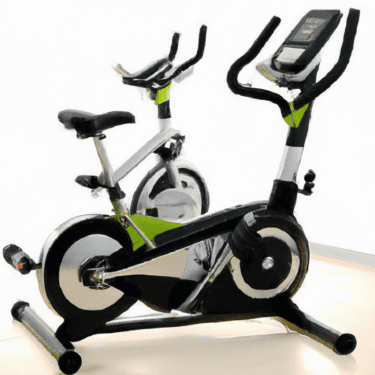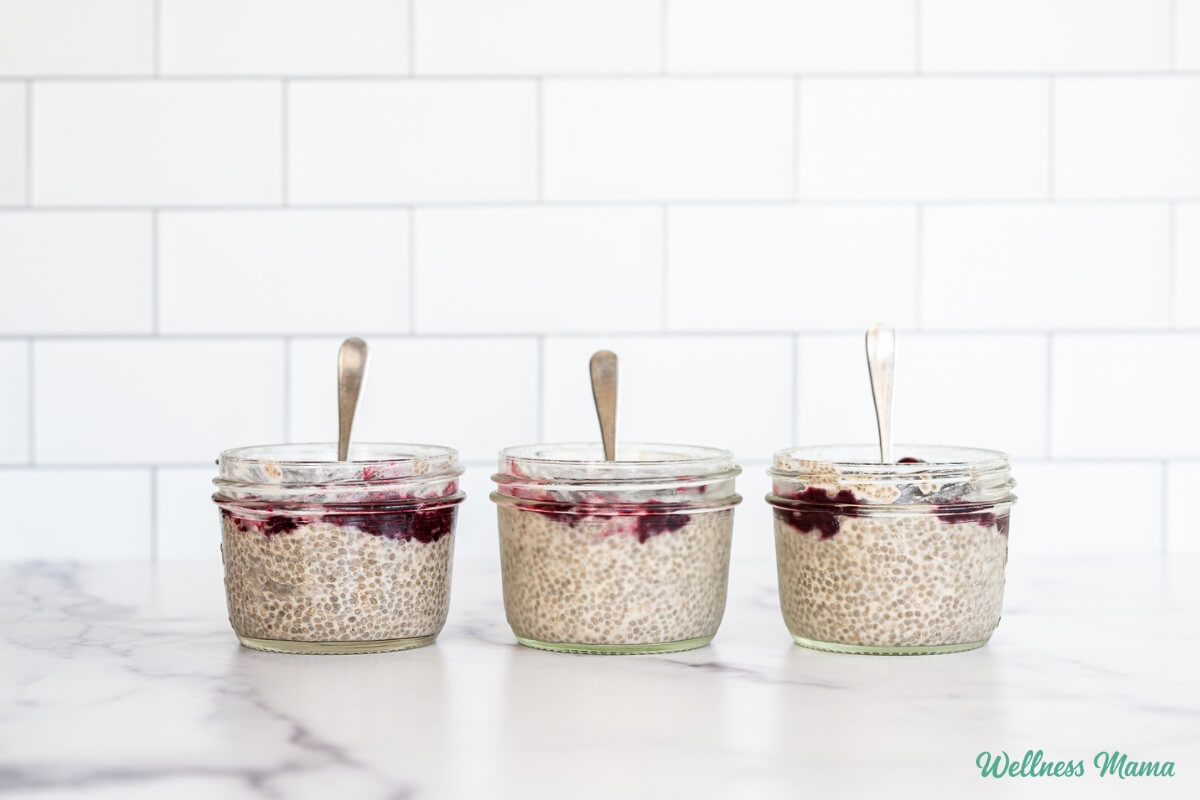Weight Loss For Your Abs Biking Exercises
If you’re looking to shed those extra pounds and tone your abs, biking exercises might just be the answer you’ve been searching for. With their low impact on the joints and ability to target multiple muscle groups, biking exercises can provide an effective and enjoyable way to achieve your weight loss goals. In this article, we will explore the benefits of biking exercises for weight loss, as well as provide some tips and techniques to maximize your results. So grab your bike and get ready to pedal your way to a fitter, stronger, and more defined abdominal area.

Benefits of Biking for Weight Loss
Increases calorie burn
Biking is a fantastic way to burn calories and aid in weight loss. When you hop on a bike, you engage different muscles in your body, which leads to an increase in calorie burn. Depending on the intensity and duration of your ride, you can easily burn hundreds of calories per hour. So, if you’re aiming to shed those extra pounds, biking is an excellent option to consider.
Targets abdominal muscles
One of the major benefits of biking is that it targets your abdominal muscles. As you pedal, your core muscles are engaged to maintain balance and stability. This means that not only are you burning calories, but you’re also strengthening and toning your abs. By incorporating biking exercises into your routine, you can sculpt your midsection and achieve those coveted washboard abs.
Low-impact exercise
If you’re looking for a low-impact exercise that is gentle on your joints, biking is the perfect choice. Unlike activities such as running or jumping, biking puts minimal stress on your knees, ankles, and hips. This makes it suitable for individuals of all fitness levels, including those with joint issues or injuries. By choosing biking as your primary exercise for weight loss, you can avoid unnecessary strain on your body while still reaping the benefits.
Improves cardiovascular health
Regular biking exercises have a positive impact on your cardiovascular health. When you engage in this aerobic activity, your heart rate increases, which promotes better blood circulation and strengthens your heart muscle. With consistent biking workouts, you can improve your cardiovascular endurance, reduce the risk of heart disease, and enhance overall cardiovascular health. Plus, a healthy heart is essential for efficient weight loss and maintaining optimal fitness.
Choosing the Right Bike
Consider your fitness level
When selecting a bike for weight loss, it’s important to consider your fitness level. If you’re a beginner or have limited experience with biking, a standard road bike or a hybrid bike can be a great place to start. These bikes offer a comfortable riding position and are suitable for various terrains. However, if you’re an experienced cyclist or looking for a more aggressive workout, a mountain bike or a road racing bike may be a better fit for you.
Select the appropriate bike type
The type of bike you choose will depend on your preferences, goals, and the terrain you plan to ride on. If you primarily plan to ride on paved roads and trails, a road bike or a hybrid bike will be well-suited to your needs. On the other hand, if you enjoy off-road adventures and want to tackle rugged terrains, a mountain bike would be a better option. Consider the type of biking you’ll be doing most often and choose a bike that aligns with your intended activities.
Ensure proper bike fit
To maximize the benefits of biking and prevent discomfort or injuries, it’s crucial to ensure a proper bike fit. The right bike fit involves adjusting the bike’s components, such as the saddle height, handlebar position, and pedal alignment, to match your body’s unique proportions. If you’re unsure about how to achieve the correct bike fit, consider seeking assistance from a professional bike fitter. They can make the necessary adjustments based on your body measurements and riding style, ensuring a comfortable and efficient biking experience.
Invest in a quality bike
When it comes to biking for weight loss, investing in a quality bike is a wise decision. While it may be tempting to opt for a cheaper or second-hand option, a well-made bike will offer better performance, durability, and comfort. A high-quality bike typically features advanced components, such as lighter frames, smoother gears, and responsive brakes, which can enhance your overall biking experience. Additionally, a reliable bike is less likely to require frequent repairs, allowing you to focus on your weight loss journey without any interruptions.
Preparation for Biking Exercises
Consult with a healthcare professional
Before embarking on any new exercise routine, especially if you have any underlying health conditions, it’s essential to consult with a healthcare professional. They can evaluate your overall health and provide guidance on the suitability of biking exercises for your specific circumstances. Additionally, they can offer valuable advice on any precautions or modifications you may need to take to ensure a safe and effective workout. Prioritizing your health and safety is crucial when incorporating biking into your weight loss journey.
Warm up before each session
To prepare your body for a biking workout and decrease the risk of injuries, always warm up before each session. A proper warm-up routine should include dynamic stretches and light cardio exercises to increase your heart rate and warm up your muscles. Spend about 5-10 minutes performing exercises such as knee lifts, arm swings, and leg swings. This will help loosen up your joints, improve your range of motion, and mentally prepare you for the workout ahead.
Ensure proper hydration
Staying hydrated is vital before, during, and after your biking exercises. Proper hydration helps maintain your body’s fluid balance, regulates body temperature, and supports optimal performance. Before hopping on your bike, make sure to drink an adequate amount of water to hydrate your body. During longer rides, carry a water bottle or a hydration pack to replenish fluids as needed. Remember, dehydration can lead to fatigue, muscle cramps, and decreased exercise performance, so make hydration a priority in your biking routine.
Dress comfortably and safely
Choosing the right attire for your biking exercises is crucial for both comfort and safety. Opt for moisture-wicking clothing that is breathable and lightweight to keep you cool and dry during your rides. Ensure that your clothing allows for freedom of movement and doesn’t restrict your range of motion. Don’t forget to wear a properly-fitted helmet to protect your head in case of a fall or accident. Additionally, consider wearing high-visibility or reflective clothing, especially if you’ll be biking during low-light conditions, to improve your visibility to other road users.

Effective Biking Exercises for Abs
Cycling intervals
Cycling intervals are a highly effective way to engage your abdominal muscles while boosting your cardiovascular fitness. To perform cycling intervals, alternate between periods of high-intensity pedaling and recovery periods of slower-paced cycling. During the high-intensity intervals, focus on engaging your core muscles and maintaining a strong posture. This will further activate your abdominal muscles and help you develop a stronger core over time.
Hill training
Hill training is an excellent biking exercise for targeting your abs, as it requires significant effort from your core muscles to power through the inclines. Find a hill with a challenging gradient and incorporate it into your biking route. As you climb, focus on maintaining an upright posture, engaging your core, and pushing through your legs. The resistance from the hill will work your abdominal muscles as you power your way to the top, contributing to a stronger and more toned midsection.
Standing climbs
Incorporating standing climbs into your biking routine is a great way to engage your abs and stabilize your core. Stand up on your bike pedals while maintaining a strong posture and support your body weight evenly between your legs. As you climb, engage your abdominal muscles to help you maintain balance and generate power. Standing climbs target not only your abs but also your glutes, hamstrings, and quadriceps, making it a full-body workout that contributes to overall weight loss and improved muscle tone.
Sprints
Sprinting is a high-intensity biking exercise that can significantly impact your abs. Find a flat stretch of road or a designated sprinting area and pedal as fast as you can for a short period of time, typically around 20-30 seconds. During the sprints, focus on engaging your core muscles and maintaining proper form. The explosive power required for sprinting activates your abdominal muscles, helping you build strength and definition in your midsection.
Oblique twists
To target your oblique muscles, which are located on the sides of your abdomen, incorporate oblique twists into your biking routine. While pedaling, twist your torso from side to side, bringing your elbow towards the opposite knee. This rotational movement engages the oblique muscles and helps strengthen and sculpt the waistline. Keep in mind that oblique twists should be performed with control and proper form to avoid straining your back or other muscles.
Proper Technique and Form
Maintain a neutral spine
Maintaining a neutral spine is essential for proper biking technique and to avoid unnecessary strain on your back. When riding, make sure to keep your back straight and aligned with your hips. Avoid rounding or arching your back, as this can lead to discomfort and potential injuries. A straight and neutral spine position helps distribute your body weight evenly and ensures a more efficient transfer of power to your pedals.
Engage your core
Engaging your core muscles throughout your biking exercises is vital for stability, balance, and overall strength. Keep your abdominal muscles activated by pulling your belly button towards your spine. This will not only assist in supporting your body’s weight but also help you maintain proper form and prevent unnecessary strain on your back. A strong and engaged core also contributes to better overall biking performance and helps you get the most out of your workout.
Keep your knees aligned
Maintaining proper knee alignment is crucial to prevent undue stress on your joints and ensure a safe biking experience. When pedaling, make sure your knees are in line with your feet and are not collapsing inward or splaying outward. This alignment helps distribute the workload evenly across your leg muscles and reduces the risk of knee pain or injuries. Pay attention to your knee position throughout your biking exercises and correct any misalignment to maintain optimal form.
Pedal with a smooth motion
Efficient pedaling technique is essential for maximizing the benefits of biking exercises. Aim to pedal in a smooth, circular motion rather than relying solely on pushing down with your legs. Apply even pressure and focus on pulling up as well as pushing down on the pedals. This technique engages more muscle groups, including your abs, and allows for a more efficient transfer of power. By pedaling with a smooth motion, you’ll increase your calorie burn, improve your cardiovascular fitness, and enhance the effectiveness of your abdominal exercises.
Incorporating Strength Training Exercises
Planks
Planks are an excellent strength training exercise that targets your entire core, including your abs. This exercise can be done both on and off the bike and requires no equipment. Begin by getting into a push-up position, with your forearms resting on the ground and your body forming a straight line from head to toe. Hold this position for as long as you can, focusing on keeping your core muscles engaged. Planks not only help build strength in your abs but also contribute to improved posture and better stability during your biking exercises.
Bicycle crunches
Bicycle crunches are a classic abdominal exercise that mimics the pedaling motion of biking. To perform bicycle crunches, lie flat on your back with your hands behind your head. Lift both feet off the ground and bring your right elbow towards your left knee, while extending your right leg out straight. Repeat on the other side, bringing your left elbow towards your right knee. Alternate sides in a smooth and controlled motion, engaging your abs with each twist. Bicycle crunches help strengthen your core muscles and can be a great addition to your biking routine for optimal weight loss.
Leg raises
Leg raises are a challenging yet effective strength training exercise for your abs. Lie flat on your back with your arms resting by your sides and your legs together. Slowly lift both legs off the ground, keeping them straight, until they are perpendicular to the floor. Pause for a moment and then lower your legs back down, maintaining control throughout the movement. Focus on engaging your lower abdominal muscles to lift your legs and avoid any momentum-driven swinging. Leg raises help target your lower abs and can complement your biking exercises in strengthening and toning your midsection.
Russian twists
Russian twists are another great exercise for targeting your oblique muscles and enhancing core strength. Begin by sitting on the ground with your knees bent and your feet lifted slightly off the floor. Hold a weight plate or a dumbbell with both hands, or you can also perform the exercise without any added weight. Lean back slightly and rotate your torso from side to side, touching the weight or your hands to the ground on either side of your body. Keep your core engaged throughout the exercise and focus on controlled movements. Russian twists can be incorporated into your strength training routine to further develop your abs and improve your overall muscular endurance.
Mountain climbers
Mountain climbers are a dynamic full-body exercise that engages multiple muscle groups, including your abs. Get into a plank position with your palms flat on the ground and your body forming a straight line. From this position, alternate bringing one knee towards your chest, then quickly switch to the other knee. Keep your core engaged throughout the movement and maintain a steady pace. Mountain climbers help increase your heart rate, burn calories, and strengthen your abdominal muscles. They can be a challenging addition to your strength training routine to boost your weight loss efforts.
Creating a Balanced Routine
Include other forms of cardiovascular exercise
While biking is an excellent cardiovascular exercise for weight loss, it’s important to incorporate other forms of cardiovascular activities into your routine for a well-rounded approach. Consider adding activities such as swimming, jogging, or dancing to diversify your workouts and engage different muscle groups. This not only adds variety but also helps prevent workout plateaus and keeps you motivated. Aim for at least 150 minutes of moderate-intensity aerobic activity or 75 minutes of vigorous-intensity aerobic activity per week, in addition to your biking exercises, for optimal weight loss results.
Incorporate strength training for overall body tone
Strength training exercises, in addition to biking, are crucial for overall body tone and weight loss. While biking primarily targets your lower body, incorporating exercises that target your upper body, such as push-ups or bicep curls, helps create a balanced physique. Strength training also boosts your metabolism, increases lean muscle mass, and contributes to long-term weight loss. Aim to incorporate strength training exercises into your routine at least two to three times per week, focusing on different muscle groups each session.
Allow for rest and recovery
Rest and recovery are vital components of any well-designed exercise routine, and biking for weight loss is no exception. Give your body sufficient time to recover between intense biking sessions to avoid overuse injuries and burnout. Listen to your body and pay attention to any signs of fatigue or excessive soreness. On rest days, engage in gentle activities such as stretching, yoga, or light walking to promote recovery and reduce muscle soreness. Prioritizing rest and recovery will help optimize your biking exercises and ensure long-term success in your weight loss journey.
Track progress and set goals
Tracking your progress and setting achievable goals is a powerful motivator and can help you stay on track with your biking exercises. Keep a record of your rides, including distance covered, duration, and perceived effort level. This allows you to monitor your improvement over time and identify areas for growth. Additionally, set specific and realistic goals for yourself, whether it’s increasing your mileage, improving your average speed, or completing a challenging biking route. Celebrate each milestone you reach, and don’t forget to reward yourself for your hard work and dedication.
Nutrition Tips for Effective Weight Loss
Focus on whole foods and balanced meals
When it comes to weight loss, nutrition plays a significant role alongside your exercise routine. Focus on consuming whole, unprocessed foods that are nutrient-dense and provide you with sustained energy. Include plenty of fruits, vegetables, lean proteins, whole grains, and healthy fats in your meals. Strive for balanced meals that consist of a combination of carbohydrates, proteins, and fats, as this will help keep you satiated and provide a steady release of energy throughout the day.
Eat sufficient protein
Protein is an essential nutrient for weight loss and muscle recovery. Including adequate protein in your diet helps preserve lean muscle mass, supports muscle repair after workouts, and aids in satiety. Incorporate lean sources of protein such as chicken, fish, tofu, eggs, or legumes into your meals and snacks. Aim for a balance of macronutrients and make protein a key component of each meal to support your weight loss goals.
Monitor calorie intake
To effectively lose weight, it’s important to monitor your calorie intake. While biking exercises burn calories, it’s easy to consume more than you burn if you’re not mindful of your food choices. Use a food diary or a calorie-tracking app to keep track of your daily calorie intake and ensure you’re creating a calorie deficit. This means consuming fewer calories than you’re burning through exercise and daily activities. Remember to focus on consuming nutrient-dense foods rather than simply counting calories, as the quality of your diet matters just as much as the quantity.
Stay hydrated
Hydration is crucial for overall health and weight loss. Drinking sufficient water throughout the day helps regulate your body temperature, aids in digestion, and supports optimal exercise performance. Aim to drink at least 8 cups (64 ounces) of water per day, and increase your intake if you’re engaging in intense biking exercises. If you’re biking for longer durations or in hot weather, consider adding electrolytes to your water or consuming sports drinks to replenish lost fluids and essential minerals.
Avoid excessive sugar and processed foods
When aiming for weight loss, it’s important to limit your intake of excessive sugar and processed foods. These foods are often high in empty calories, lack essential nutrients, and can lead to weight gain and other health issues. Cut back on sugary drinks, sweets, refined grains, and packaged snacks. Instead, opt for whole, unprocessed foods and satisfy your sweet tooth with natural sources of sweetness, such as fruits. By making mindful food choices, you’ll fuel your body with the nutrients it needs and support your weight loss efforts.
Staying Motivated and Overcoming Challenges
Set realistic expectations
Setting realistic expectations is key to staying motivated and avoiding disappointment during your weight loss journey. Remember that weight loss is a gradual process and that sustainable changes take time. Aim for a steady and healthy weight loss of 1-2 pounds per week. Celebrate each milestone, even if it seems small, and focus on the positive changes you’re making in your lifestyle and overall well-being.
Find a biking buddy or join a group
Exercising with a friend or joining a biking group can greatly enhance your motivation and make biking more enjoyable. Having a biking buddy or a supportive community provides accountability, encourages healthy competition, and allows you to share your successes and challenges along the way. Biking with others also adds a social element to your workouts, making them more fun and engaging. Look for local biking clubs or ask a friend to join you on your biking adventures.
Listen to music or podcasts
Listening to your favorite music or podcasts while biking can be a great way to stay motivated and make your workouts more enjoyable. Create a playlist of energizing songs that pump you up and keep you moving. Alternatively, tune in to your favorite podcasts or audiobooks to make the most of your ride time. The distraction of music or an interesting podcast can help the time fly by and keep you engaged in your biking exercises.
Reward yourself for milestones
As you make progress towards your weight loss goals, it’s important to reward yourself for your hard work and dedication. Set milestones along the way and plan rewards for when you achieve them. Treat yourself to something you enjoy, such as a massage, a new piece of biking gear, or a day off from your workouts. Celebrating your accomplishments reinforces positive behavior and helps you stay motivated for the long haul.
Stay consistent and committed
Consistency and commitment are the foundations of successful weight loss. Make biking a regular part of your routine and stick to it, even when you face challenges or feel unmotivated. Create a schedule that works for you and make biking a non-negotiable part of your day or week. If you find it difficult to stay consistent, remind yourself of the benefits you’ll reap, both physically and mentally, from regular biking exercises.
Safety Tips for Biking Exercises
Wear a helmet and protective gear
When it comes to biking, safety should always be a priority. Always wear a properly-fitted helmet to protect your head in case of falls or accidents. Additionally, consider wearing other protective gear such as knee pads, elbow pads, and wrist guards, especially if you’re engaging in more challenging biking exercises or riding in areas with potential hazards. By wearing the appropriate protective gear, you can minimize the risk of injuries and bike with confidence.
Observe traffic rules and signals
When biking on roads or in shared spaces, it’s crucial to observe traffic rules and signals. Treat your bike ride as if you were driving a vehicle, following the same rules of the road. Signal your turns, stop at red lights and stop signs, and yield to pedestrians. By being a responsible and predictable cyclist, you contribute to a safer biking environment for yourself and others.
Use reflective clothing for visibility
Visibility is key for safe biking exercises, especially when riding during low-light conditions or at night. Invest in reflective clothing, such as a vest or reflective strips, to make yourself more visible to other road users. Additionally, consider equipping your bike with reflectors or attaching lights to your bike, particularly a front light and a rear light, to enhance your visibility from all angles. Being visible to drivers, pedestrians, and other cyclists greatly reduces the risk of accidents and ensures a safer biking experience.
Stay alert and aware of surroundings
Maintaining situational awareness is crucial when biking, as it allows you to anticipate potential hazards and react accordingly. Stay focused on the road or trail ahead, scanning for obstacles, pedestrians, or vehicles. Avoid distractions such as using your phone or wearing headphones, as they can hinder your ability to react quickly to changes in your environment. By remaining alert and aware of your surroundings, you can navigate your biking exercises safely and confidently.
Check and maintain your bike regularly
Regular bike maintenance is essential for safe and efficient biking exercises. Before each ride, inspect your bike for any signs of wear or damage, such as loose bolts, worn-out tires, or malfunctioning brakes. Ensure that your tires are properly inflated and that your chains and gears are clean and lubricated. If you’re unsure about bike maintenance, consider taking your bike to a professional for a tune-up at regular intervals. By keeping your bike in good working condition, you reduce the risk of mechanical failures and enjoy a smooth and safe biking experience.




1 comment